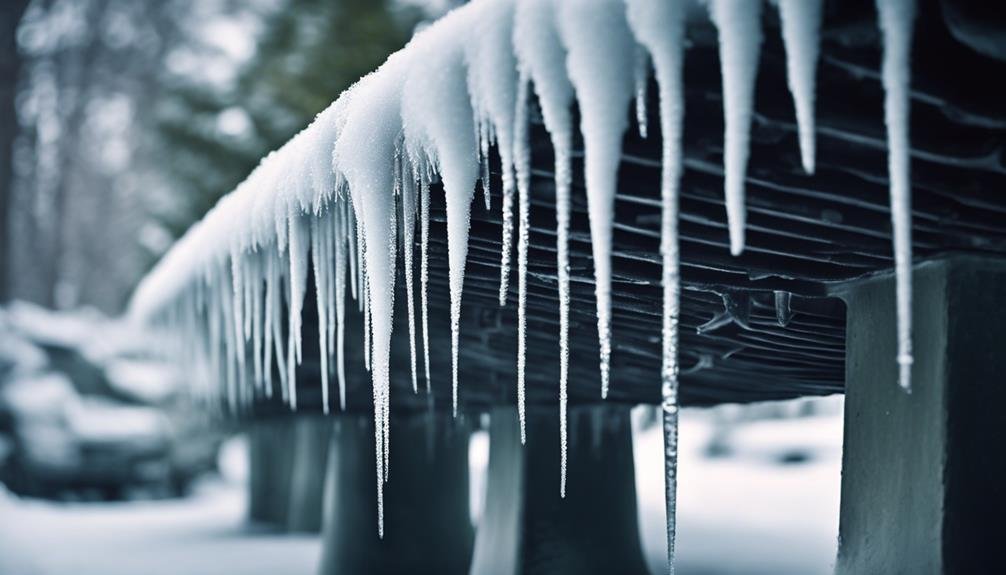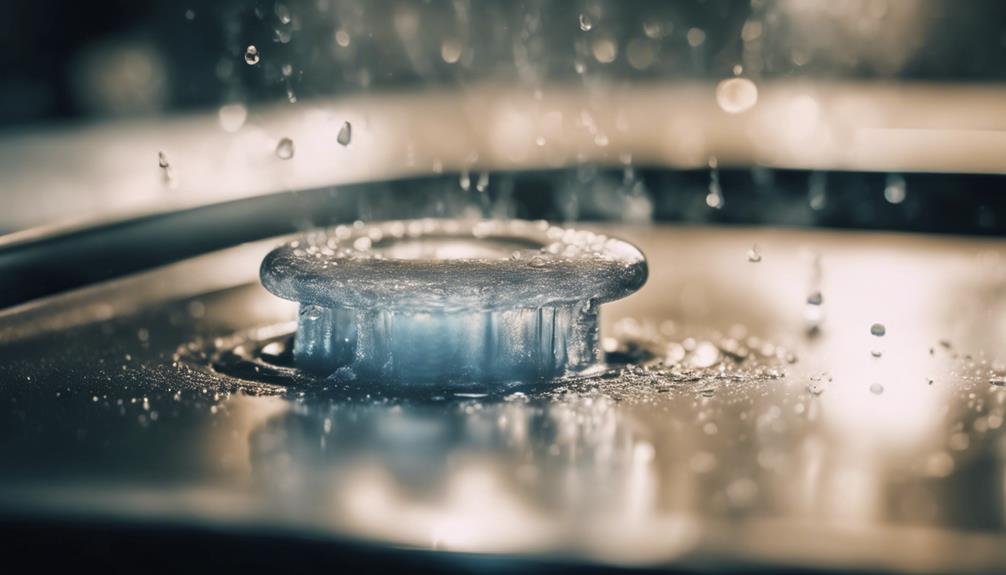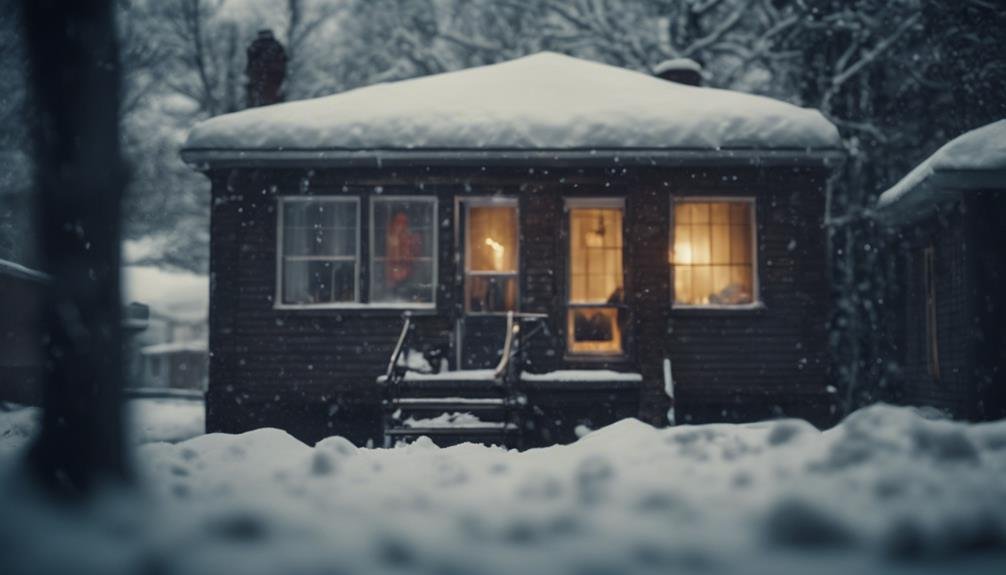To maintain filtration systems in winter, it is important to take several key steps. Insulating pipes with foam or fiberglass can prevent freezing, while regular filter replacements and keeping drainage channels clear of debris are also essential. Monitoring temperature levels and using insulation wraps or heat lamps can help maintain ideal operating conditions. Regular inspections can uncover leaks and moisture problems, allowing for timely repairs. Pressure testing is a proactive measure to identify hidden leaks before they result in burst pipes and costly damage. Having a backup power source, such as batteries, ensures continuous operation during power outages. By following these guidelines and being prepared, you can ensure that your filtration system functions smoothly throughout the winter months.
Some of the links in this article may be affiliate links. If you make a purchase through these links, we may earn a small commission at no extra cost to you. Thank you.
Insulate Pipes Adequately
To prevent pipes from freezing and bursting in cold winter weather, it's crucial to insulate any exposed pipes properly. When pipes are left uninsulated, they're at risk of freezing, which can lead to the water inside expanding and potentially causing the pipe to burst. This can result in expensive repairs and water damage to your home.
The best way to insulate pipes is by using materials specifically designed for this purpose, such as foam pipe insulation or fiberglass wrap. These products are easy to install and create an effective barrier against the cold. Make sure to cover the entire length of the pipe with insulation, ensuring there are no gaps or exposed areas. Pipes in unheated areas like attics, crawl spaces, and exterior walls are especially vulnerable and should be prioritized.
Additionally, it's important to seal any openings where pipes enter your home to prevent drafts from reaching the insulated pipes. Taking the time to properly insulate your pipes now can greatly reduce the risk of frozen pipes and potential water damage in the future.
A little preparation and investment in insulation materials can save you from major headaches down the road.
Routine Filter Replacement
With winter approaching, it's crucial to stay on top of our filter replacement schedule as the cold weather can strain filtration systems. Keeping extra filters on hand is key to preventing any disruptions, so it's a good idea to review our inventory and order any necessary parts in advance.
Regular filter maintenance is essential for ensuring optimal system performance, especially in challenging conditions like winter. By staying proactive and planning ahead, we can keep our systems running smoothly and efficiently throughout the season.
Filter Service Schedule
Regularly changing filters is crucial for maintaining filtration systems, especially in winter when they work harder. It's important to follow the manufacturer's recommendations for filter replacement and consider the increased demand during colder months.
During winter, filters may need more frequent changes due to higher levels of contaminants from heating systems and increased airborne particles. Typically, filters should be replaced every 1-3 months in winter, but consulting the system manual for specific guidance is recommended.
Adhering to this schedule is vital for ensuring proper airflow, preventing equipment strain, and keeping indoor air quality at optimal levels. Stocking up on the right replacement filters in advance and marking filter change dates on a calendar can help with timely replacements.
In addition to scheduled replacements, regular inspections are essential to monitor filter condition between changes. Signs like visible dirt, dust accumulation, or reduced airflow indicate a clogged filter that needs replacing sooner. Maintaining detailed records of service dates will aid in refining the replacement cycle over time.
Replacement Part Availability
Keeping the right replacement filters on hand is crucial for ensuring smooth operations during routine filter changes. To maintain availability, it's important to follow the manufacturer's recommendations and order filters ahead of time. Subscribing to services that automatically deliver new filters at set intervals can simplify the process and prevent last-minute shortages.
It's vital to double-check that the replacement filters are compatible with our existing filtration systems to avoid issues like decreased efficiency, system damage, or safety risks. Referencing the owner's manual or reaching out to the manufacturer for specific requirements is key. Having a few spare filters in stock can also prevent downtime in case of delays or backorders.
When purchasing replacement filters, consider any changes in system needs or environmental conditions that may call for different filter types or ratings. Upgrading to higher-efficiency models can enhance performance and extend service life.
Proper Drainage Maintenance

Ensuring proper drainage maintenance for our filtration systems during winter is crucial to prevent damage and ensure optimal performance. Regularly inspecting and clearing debris or ice buildup from drainage channels and outlets is essential to avoid water backups that can harm equipment. Checking for cracks or damage in drainage pipes is also important as freezing temperatures can cause them to rupture. If needed, insulating exposed pipes can help prevent freezing and potential damage.
It is vital to size our drainage system appropriately for the increased water flow during winter months due to snow and ice melt. Installing larger drains or additional drainage channels may be necessary to accommodate the higher volume of water passing through the system.
Consideration should be given to using heating elements or salt in critical areas to prevent ice buildup and ensure smooth drainage.
Monitor Temperature Levels
In addition to ensuring proper drainage, it's important to monitor the temperature levels in our filtration systems during the winter months. Cold temperatures can lead to issues such as frozen pipes or degradation of filtration media. On the other hand, higher temperatures can promote bacterial growth or reduce the efficiency of filtration.
Here are the recommended temperature ranges for common filtration components:
- Sand Filters: 50-80°F
- Cartridge Filters: 45-100°F
- Diatomaceous Earth (DE) Filters: 55-90°F
- Activated Carbon Filters: 40-100°F
Regularly checking the temperatures inside the system housings or vessels is crucial. Using insulation wraps or heat lamps can help maintain the optimal ranges when outdoor temperatures drop.
Indoor installations have fewer concerns, but it's still important to prevent overheating from pumps or heaters. By properly managing the temperature of filtration systems, we can ensure they perform at their best during the winter months.
Inspect for Leaks

In addition to monitoring temperatures, it's crucial to thoroughly check filtration systems for leaks in the winter. Even the tiniest crack can let in cold air, potentially causing significant damage.
Imagine the following scenarios: frozen pipes bursting and causing flooding, water damage leading to expensive repairs, mold growth posing health risks, and operations being disrupted, affecting productivity.
To avoid these issues, we need to conduct detailed visual inspections. Look for any signs of moisture, discoloration, or deterioration around joints, seals, and connections. Sometimes, it may be necessary to disassemble components for a closer look. Pressure testing can also help uncover hidden leaks.
Consider Weather Enclosures
When preparing for harsh weather conditions, it's important to consider installing protective enclosures around filtration systems. Extreme cold, snow, and ice during winter can cause damage to exposed components, leading to operational issues. Weather enclosures act as a barrier, providing insulation and protection to ensure the filtration systems can function optimally.
Assessing the local climate conditions is crucial to determine the necessity of enclosures and weigh the cost-benefit analysis. Enclosures come in various forms, from simple covers to fully insulated structures with heating capabilities. Factors like the system's age, size, and operational importance influence the level of protection needed.
When choosing an enclosure, durability, ease of maintenance access, and compatibility with the filtration equipment should be considered. Adequate ventilation is essential to prevent moisture accumulation and maintain proper airflow.
Utilize Backup Power

To prepare for potential power outages that may disrupt our water filtration system in winter, it's crucial to consider investing in a backup generator or alternative power source. This step is essential to ensure uninterrupted water treatment and prevent any service disruptions.
Additionally, it's important to have proper insulation and additional heating measures in place to safeguard our equipment from freezing temperatures. By having a backup power solution in place, we can maintain the efficiency and reliability of our filtration system even during challenging weather conditions.
Backup Power Sources
It's crucial to have a reliable backup power source, especially in the winter when power outages can disrupt filtration systems. Failure to maintain power can lead to serious consequences such as toxic buildup in the water, the spread of waterborne illnesses, expensive repairs, and environmental hazards from untreated discharge.
To prevent these issues, investing in a backup battery bank connected to the grid is recommended. These battery systems automatically activate during outages, ensuring continuous filtration without any interruptions. With regular maintenance and testing, a quality backup power source provides peace of mind during winter storms that may affect the grid's stability.
Power Outage Preparedness
Ensuring a reliable power supply during outages is crucial for uninterrupted filtration operations. It's essential to carefully plan how we utilize our backup power to guarantee continuous functionality.
Regular testing and maintenance of backup generators and battery systems are necessary to ensure they'll perform effectively when required. Having an ample supply of fuel or fully charged batteries is also vital to sustain operations during prolonged power outages.
Implementing automatic transfer switches can smoothly transition to backup power sources in case of a primary supply failure. This automation reduces downtime, prevents potential damage, and maintains system integrity. Developing detailed emergency protocols that outline the steps for activating and monitoring backup systems during outages is equally important.
To enhance preparedness, ongoing training for personnel on operating backup systems and emergency response procedures is crucial. Conducting simulated drills can help identify weaknesses and improve our contingency plans.
Insulation and Heating
Proper insulation and heating are crucial to protect filtration systems from freezing in winter power outages. It's essential to ensure that our systems remain operational even when the power is out.
The consequences of a frozen filtration system can be severe, including burst pipes, leading to expensive repairs, a contaminated water supply, posing health risks, disrupted service for customers or facilities, and potential fines for noncompliance with regulations.
To prevent these scenarios, it's important to insulate pipes, tanks, and other vulnerable components with high-quality insulation materials. Additionally, installing backup heating systems powered by generators or alternative energy sources can help maintain appropriate temperatures.
Placing heaters strategically near critical points can provide further protection against freezing. By taking these measures, we can guarantee that our filtration systems continue to function effectively, even in harsh winter conditions.
Conclusion
Maintaining filtration systems during winter is essential, even if it means clearing piles of snow to access them. With regular upkeep, proper insulation, and preparation, our filters will work efficiently to keep our water and air clean and safe from harmful contaminants.
By consistently following these maintenance tips, we can ensure that our filtration systems operate smoothly, providing us with pure water and air unaffected by the harsh winter conditions.

